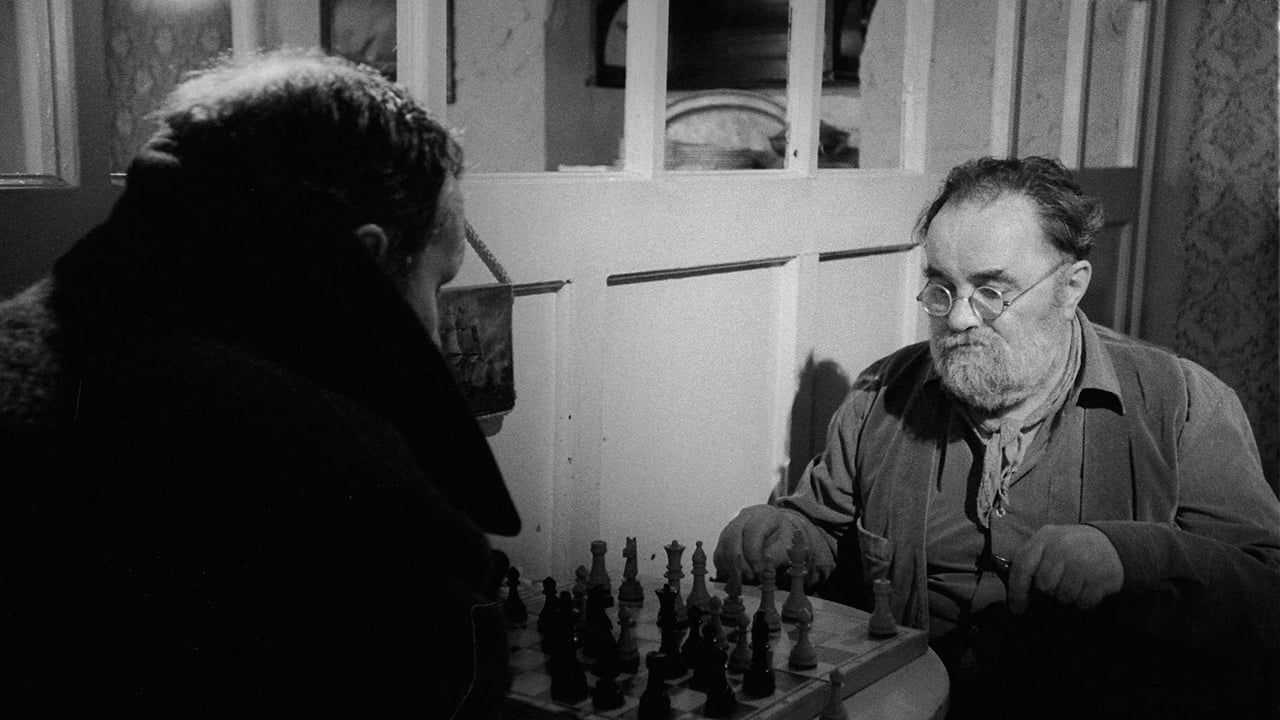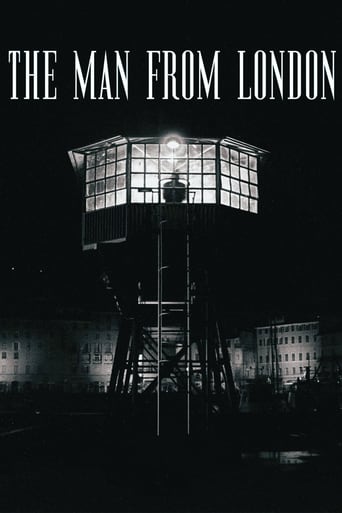

Excellent characters with emotional depth. My wife, daughter and granddaughter all enjoyed it...and me, too! Very good movie! You won't be disappointed.
... View MoreExcellent and certainly provocative... If nothing else, the film is a real conversation starter.
... View MoreThere are moments that feel comical, some horrific, and some downright inspiring but the tonal shifts hardly matter as the end results come to a film that's perfect for this time.
... View MoreClose shines in drama with strong language, adult themes.
... View MoreAdmittedly it is daunting to start watching my very first Béla Tarr's works (with his wife and longtime editor Ágnes Hranitzky credited as the co-director), who has already retreated to a permanent retirement in filmmaking after THE TURIN HORSE (2011), as his oeuvre is mostly notorious for stirring audience's usual viewing habits with long takes exceedingly overstay their length of tolerance, a mixed anticipation and perturbation has overtaken me when I selected his lesser praised 2007 feature as the very first introduction piece, rarely I was in such a state before even embarking on the ritual of watching a film.I would be dishonest if I say that the opening 13-minutes long take doesn't put me into a split second of slumber severe times, but how can anyone not to be flabbergasted by its solemn chiaroscuro grandeur, rigorously composed to illustrate a key event without spoon- feeding what is happening to audience, it is a paradigm-shifting innovation deserves admiration and endorsement, and more impressive in Tarr's long takes are not counter- narrative, in fact, he meticulously orchestrates the narrative within the long-takes, invites audience to be fully aware of our own self-consciousness towards the happenings on the screen during the overlong shots, particularly when framing at the back of characters' heads or the ones linger on characters' facial expressions as if they are tableaux vivants after the dramatic occurrences.Once I passed the early stage of maladjustment, the film tends to be rather galvanising (an accomplishment should also be ascribed to composer Mihály Vig's resounding score with accordion or pipe organ), adapted from Belgian writer Georges Simenon's 1934 French novel 1934 L'HOMME DE LONDRES, Tarr transmutes the thrilling plot to an existential quest of our protagonist Maloin (Krobot), who has incidentally discovered a windfall after witnessing a murder during his night shift as a switchman in a French-speaking port town where a harbour and the wagon station are conveniently located with each other. The subsequent storyline involves the investigation of a senior detective Thompson (Lénárt) from London and domestic wrangles with his overwrought wife Camélia (Swinton) when he splurges their money wantonly, plus the British murderer Brown (Derzsi) is very eager to get the money back. Tarr avoids any choppy development devices to pander for audience's attention span, he cooks up an equivocal scenario in the end, we never know the critical event happened inside the hut (Brown's hideout) as Tarr's camera fixates itself firmly outside the hut with its door closed, and regarding to Maloin's following behaviour, after knowing his character for almost 2-hours, each of us can give various motivations contingent on our viewings of the incident Tarr ingeniously chooses not to show us. The film is infamous also for the suicide of its producer Humbert Balson in 2005, just before the shooting due to the apparent financial burdens of Tarr's hefty Corsican setting, so the reality check is even grimmer than the formidable fiction. What can I say? My gut feeling tells me I'm officially on board with Tarr's filmic methodology and all the trappings, his sui generis aesthetic language soundingly enshrines his filmography into the lofty tier of contemporary auteurism and maybe one day he will curtain his retirement and surprise us if inspiration strikes!
... View MoreSelf-indulgent, boring piece of garbage; the worst sin a director can commit. This is the slowest, least interesting attempt at film-making that I have ever seen. I'm sure the co-directors/ "writers" must have sat through the rushes by themselves and patted themselves on the back. I don't see how the other cast and crew could sit with them and keep straight faces. I can't believe there are people who fund this garbage; they must have money to burn. I only wish I'd seen the reviews before paying to rent it. Although I'd be even more upset if I had paid to see it in a theatre. Did I see correctly? Did this garbage actually get some kind of award at Cannes?
... View MoreLet me just start by saying that this is a very beautiful film. It is shot very well, and it has a haunting score that repeated in my mind the whole of the next day. I think that this is a great tribute to Georges Simenon.The main character is a guy called Maloin (Miroslav Krobot) who works mostly at night in a glass cage down at the harbour, a signalman for the railway that picks up passengers from the ferry. The film is shot in black and white in the old port of Bastia on the island of Corsica which is quite scenic though not in a meretricious way, and I'm sure more of a purgatory for Maloin. I once read a powerful short novel by John Steinbeck called The Pearl, where a fisherman discovers a large pearl that will enable him and his family to live a life with less struggle. At the moment he discovers the pearl he lets forth a huge scream, it's a great release from suffering. So here Maloin also has a pearl dropped into his lap, which as in the Steinbeck novella will however cause it's possessor much turmoil. Tarr also manages to access this raw Steinbeckian power. He does this through looking at the relationship between Maloin and his daughter. Maloin is upset that she works in a grocery store where the proprietress is an abuser, and that her arse is available for any man to see (the words of the film). So when he comes across a highly dubious little nest egg, a briefcase he sees smuggled past customs from his vantage point, he takes her out of the shop, even though threatened with violence by the proprietress, and buys her an incredibly expensive fur stole. There was a deep rawness of emotion there, in the act of honouring someone you love.Tilda Swinton is in the movie as well Maloin's wife, I thought her acting was pretty superb in the couple of scenes that she was in. It's a very simple film really. The guilt and fear is very tangible, as is the hopelessness of Maloin's existence.It's a very contemplative sombre film, and the touches are very well done, the sighing barkeep at one point, "Little Vera has had the flu for the third time this year", a child playing football on his own, as opposed to the typical cliché of a whole street gang playing.The only slight problem I had was that the first time we see Maloin playing chess with the barkeep, the chess board is set up incorrectly, "white on the right" folks! It does "break the frame" slightly.
... View MoreTarr returns after a long absence. Unfortunately, it's not up to par. Well, I should say, I have much of the same problem with this film that I do with all of Tarr's films. I'm certainly not his biggest fan anyway. I love his aesthetic, and would definitely call him a genius just for his visual prowess. It's so extremely original. And he's so good at setting mood, although I should say that the mood of all of his films, at least his later, more well known films, is pretty close to the same. Dark, cold, lonely, the drudgery of life, etc. But as soon as the characters start to speak, I stop paying attention. I find most of the actual words of Tarr's films uninteresting, and, when the characters are talking, I start to realize that I don't find these people that interesting. They may look interesting, as Tarr captures their essence in severe close-ups, but they never say anything interesting. The Man of London unwisely adds plot to the mix. Tarr's earlier films have a wonderful meandering quality, where it feels like he's just capturing people going about their lives. That is true here to an extent, but this one has a pretty clear plot structure, and one that's been told often before: a man finds a pile of money that belongs to crooks, and he pays for it. It's not plot driven by any means, but that skeletal plot is followed, and it makes the film less interesting than Tarr's other films. Also, Tilda Swinton shows up as the protagonist's wife in what amounts to a cameo (she has about five minutes of screen time in this 2 hour and 12 minute film), and it's pretty distracting. There's a cute little nod to Satantango at one point, where people in a bar dance like they did in that behemoth. Also, the little girl with the cat from Satantango shows up as the protagonist's daughter. It's weird, because she looks exactly the same, except she's a woman now. A very, very creepy woman. Who probably still kills cats when nobody's looking.
... View More